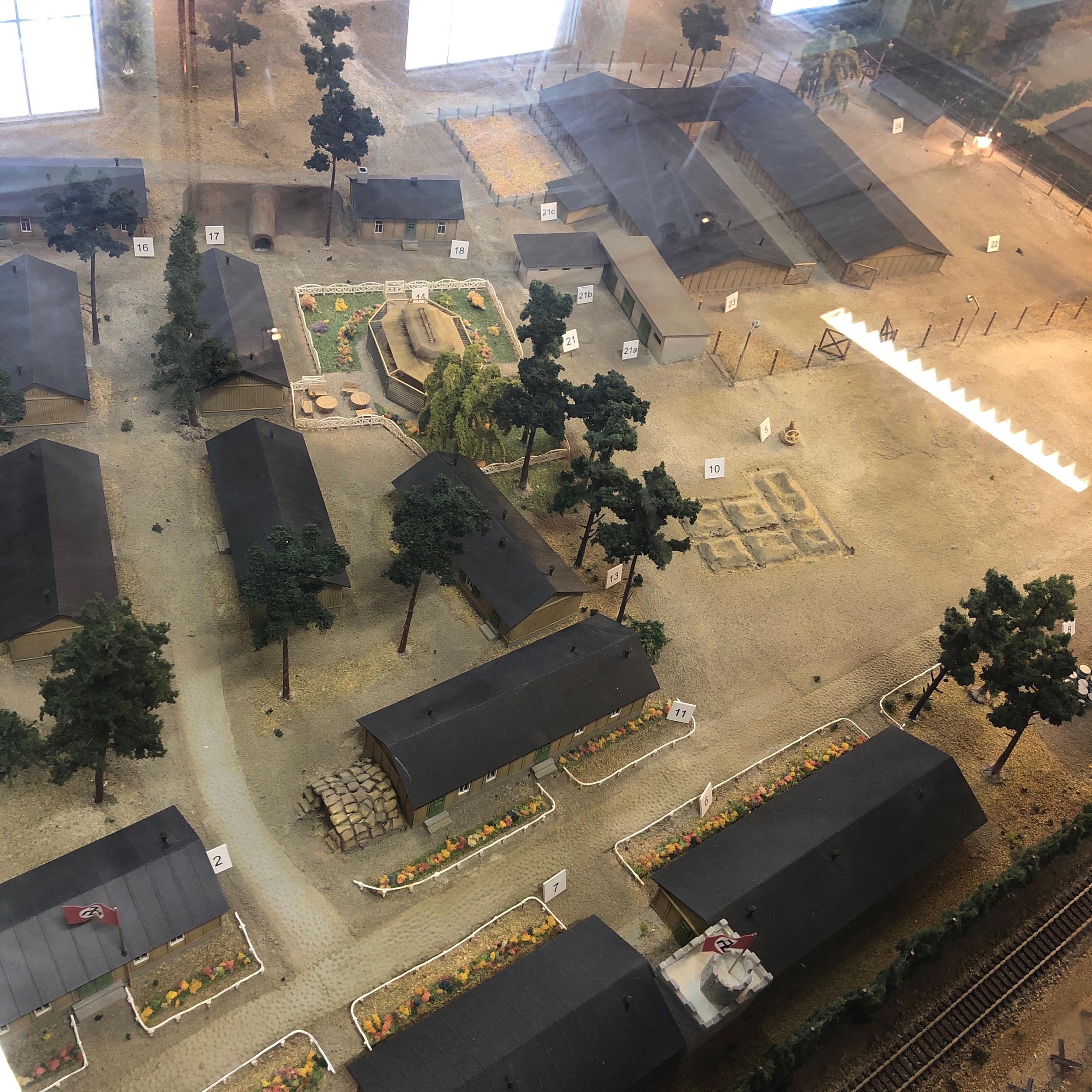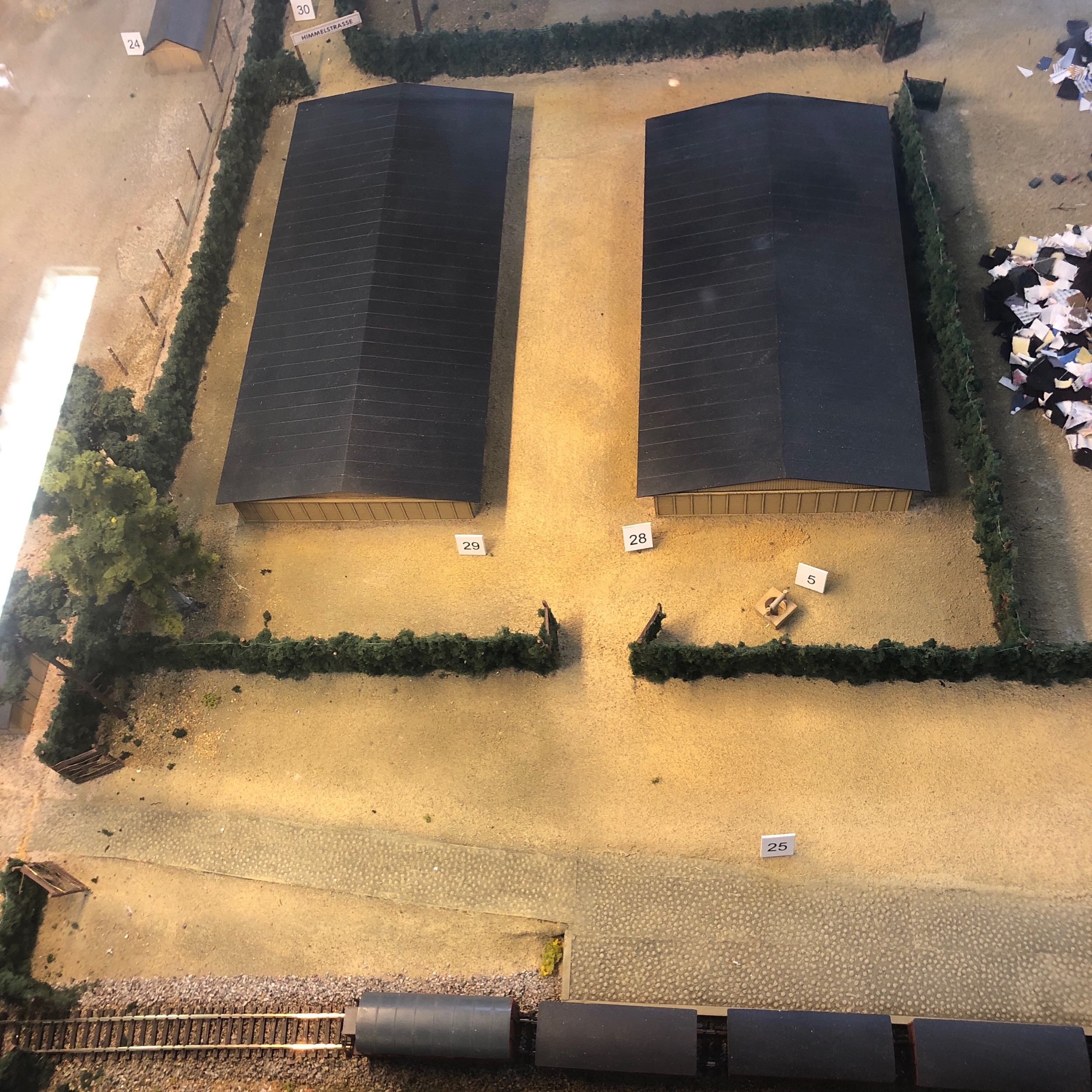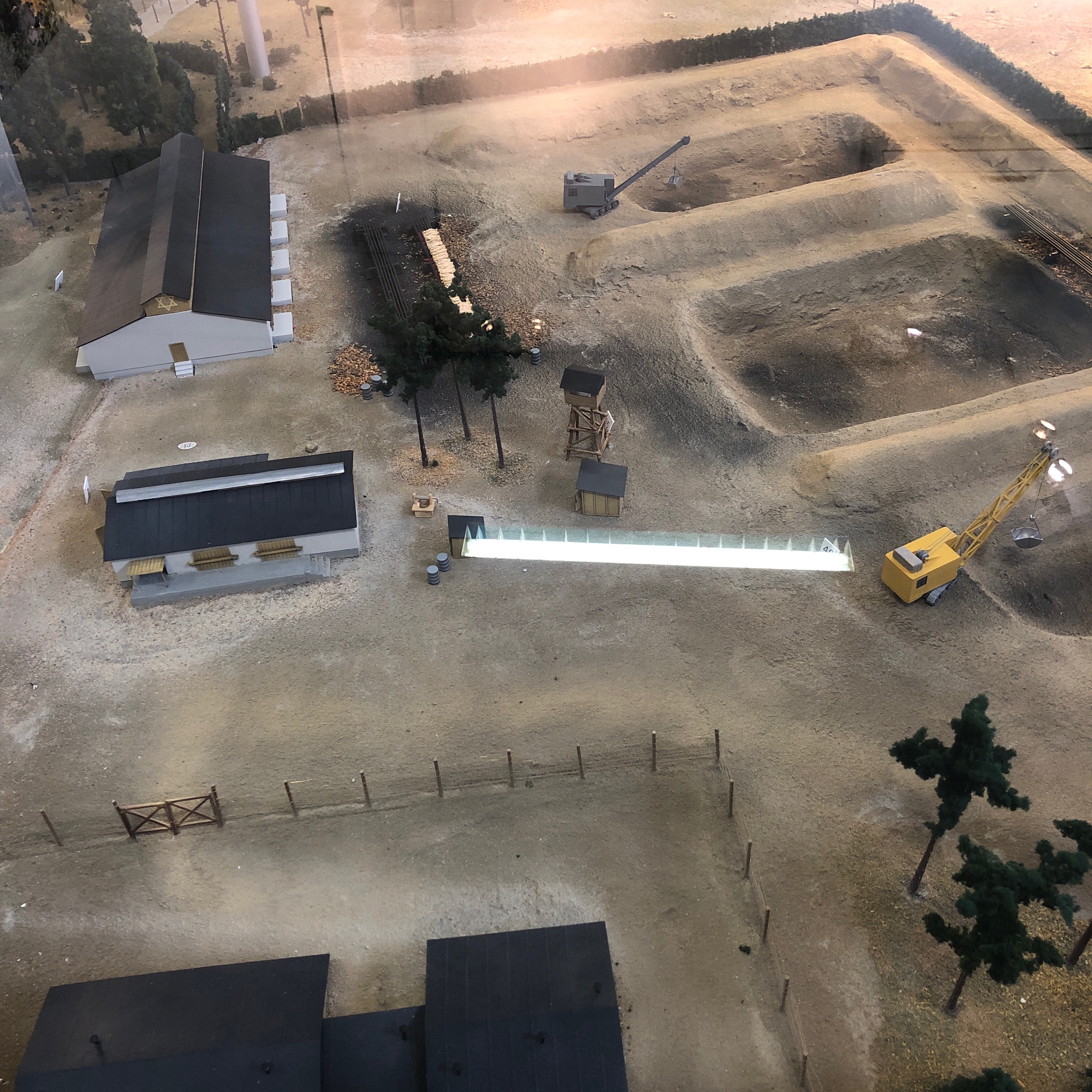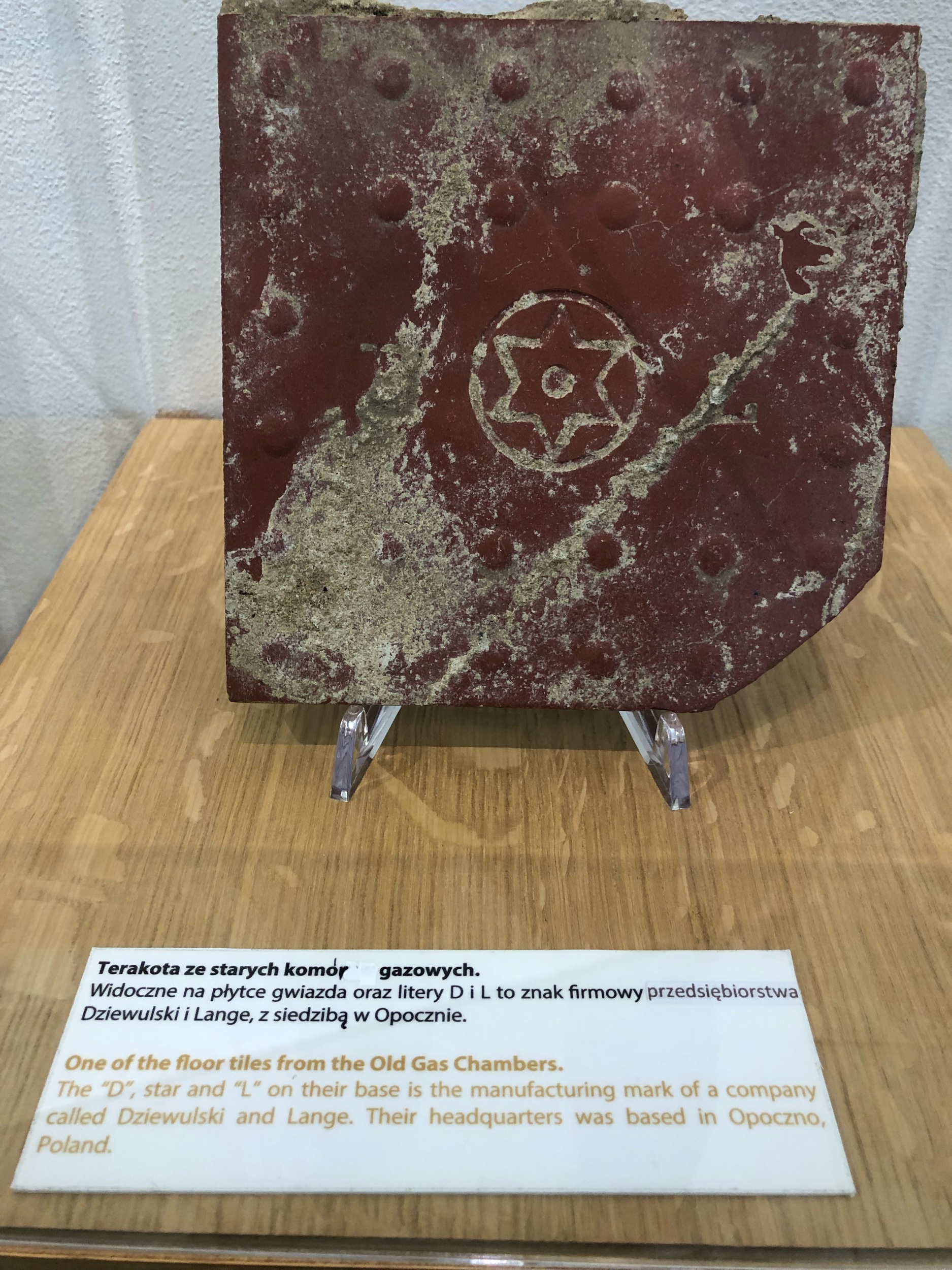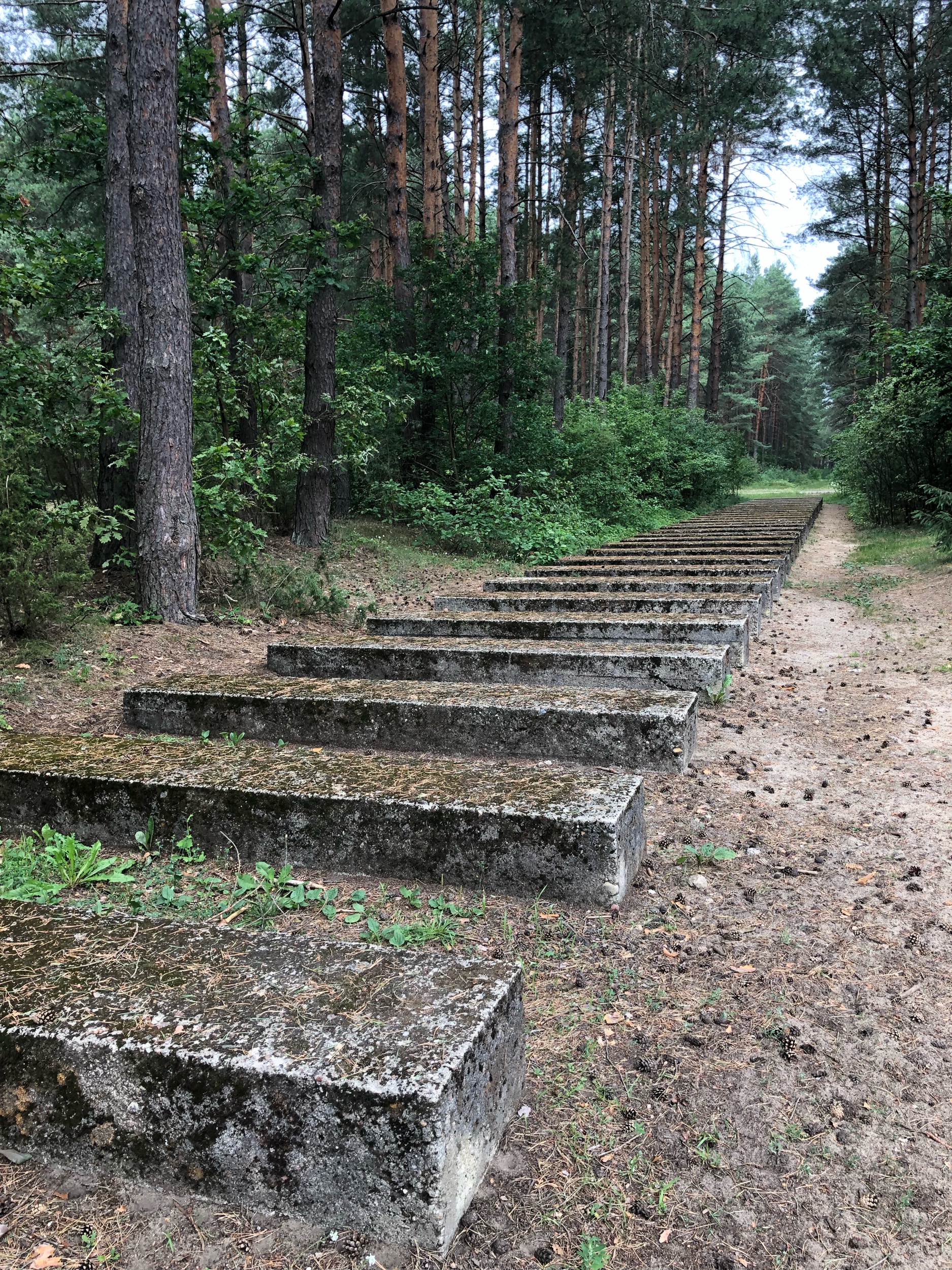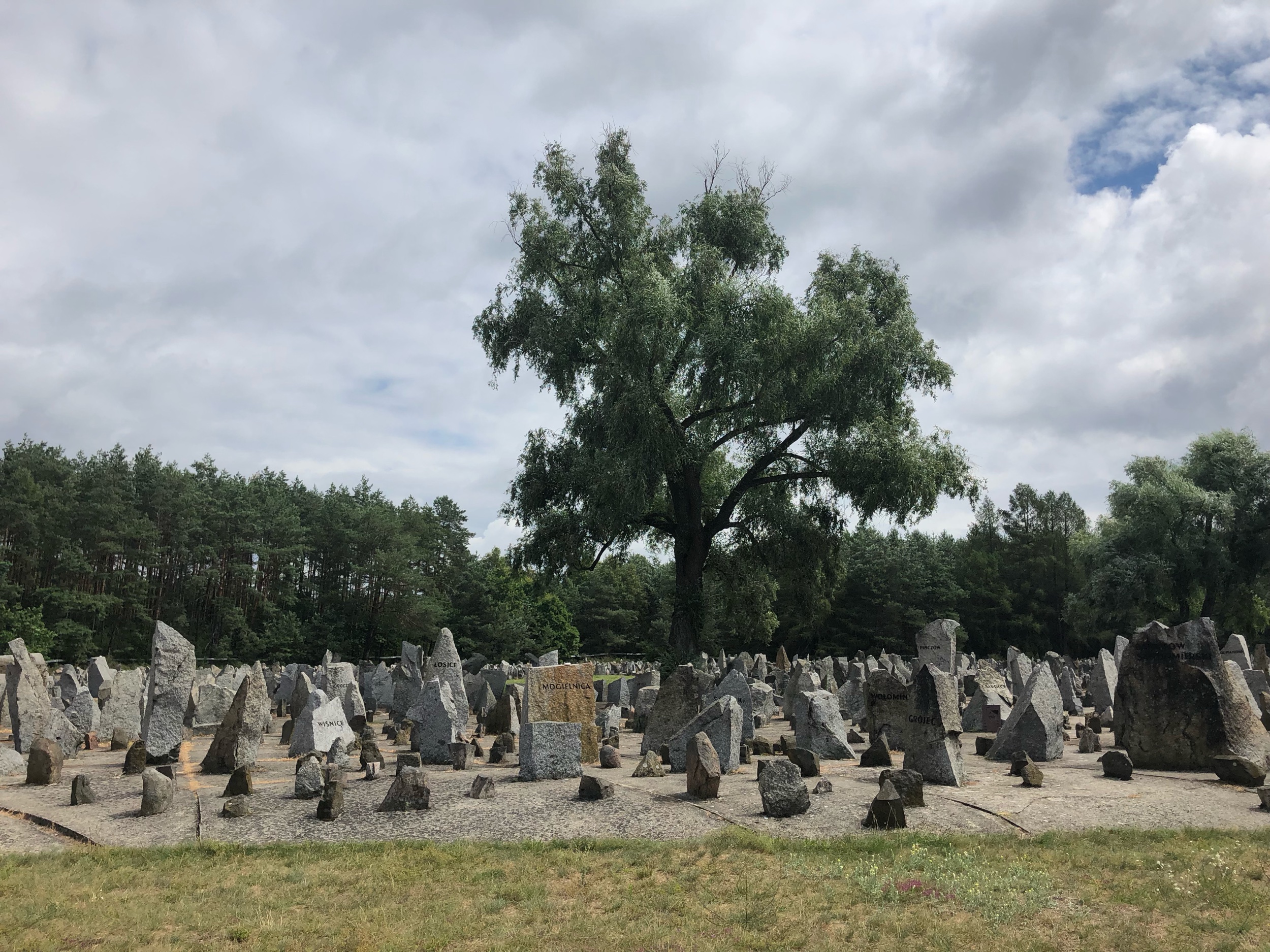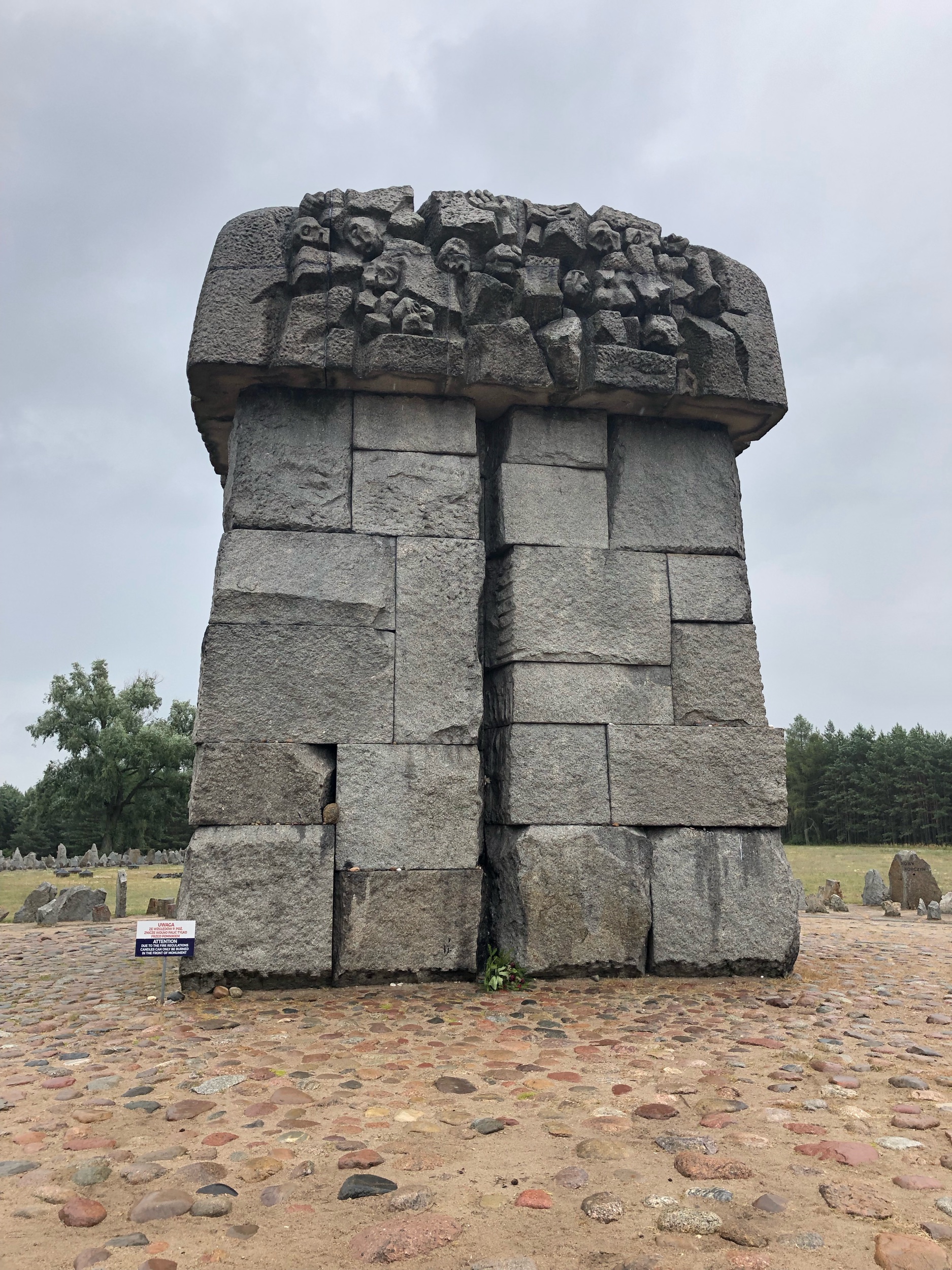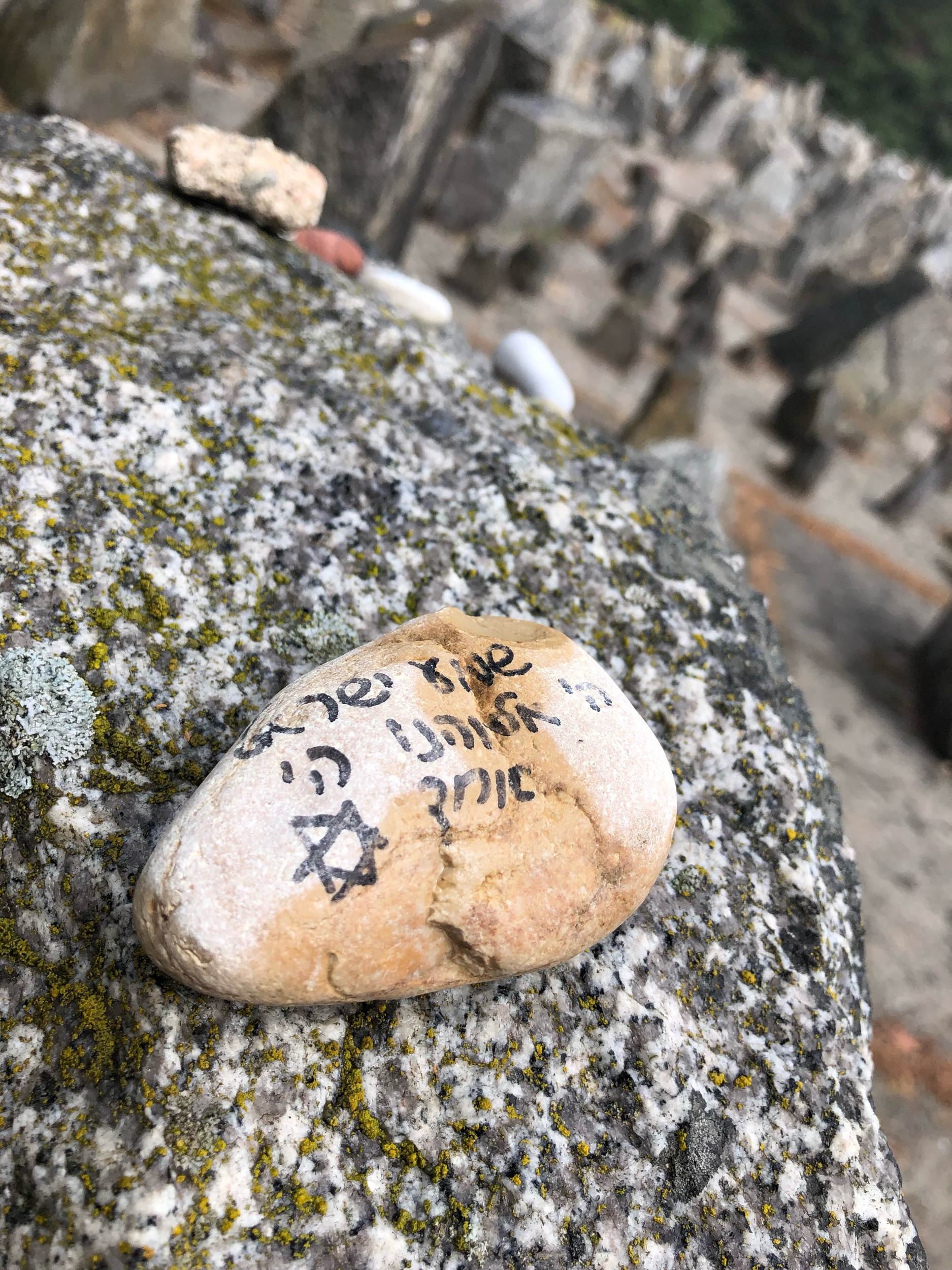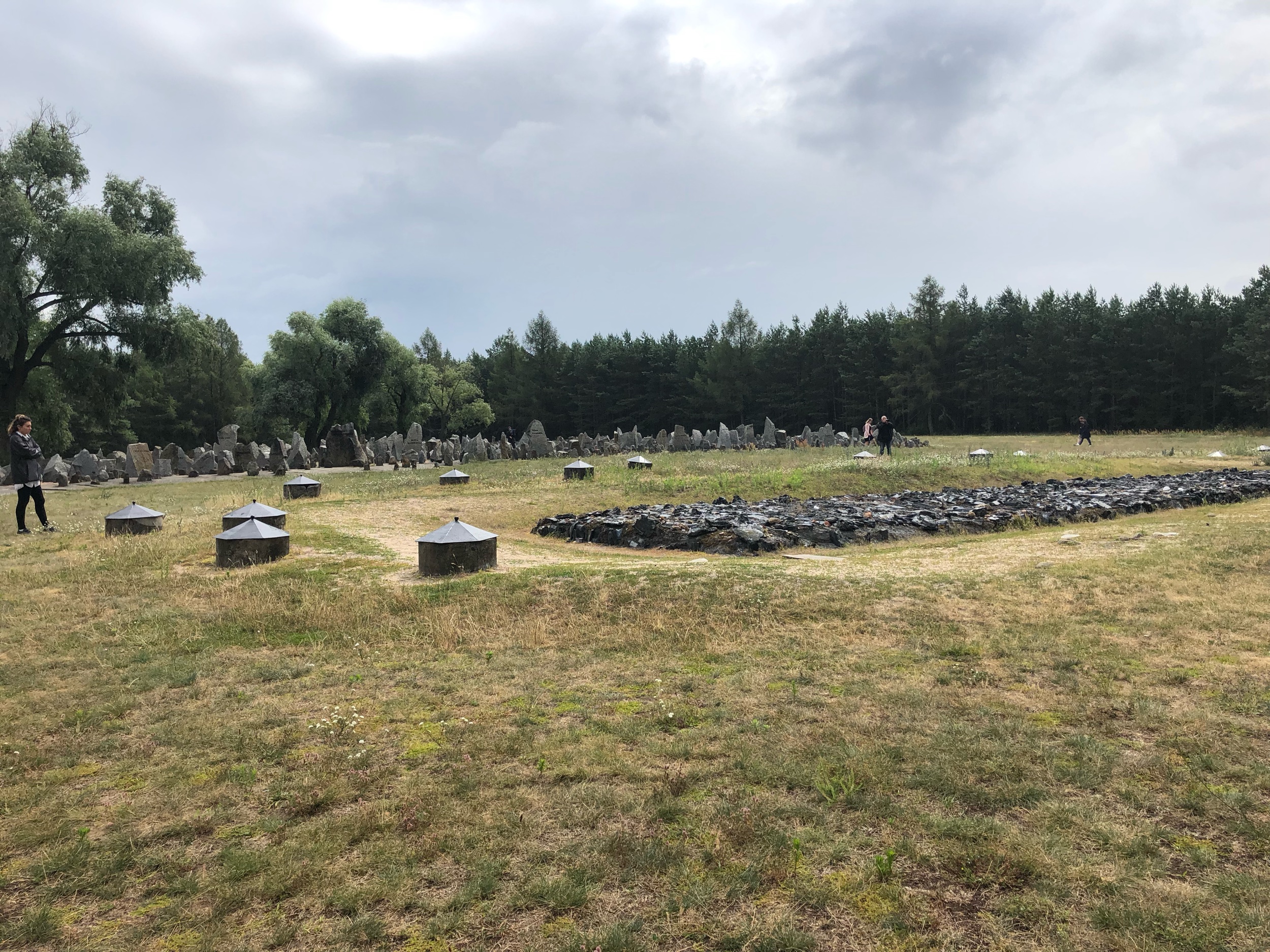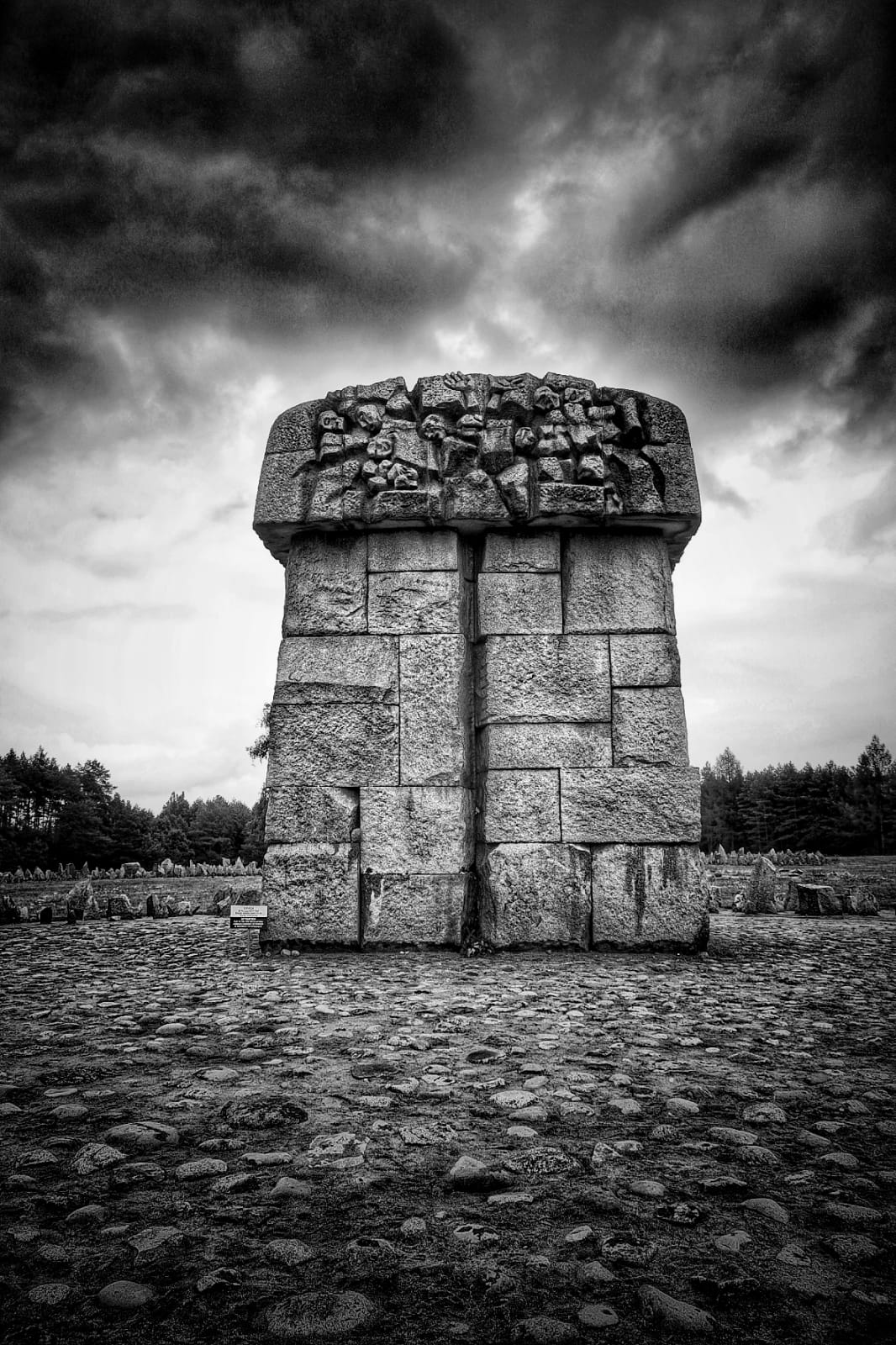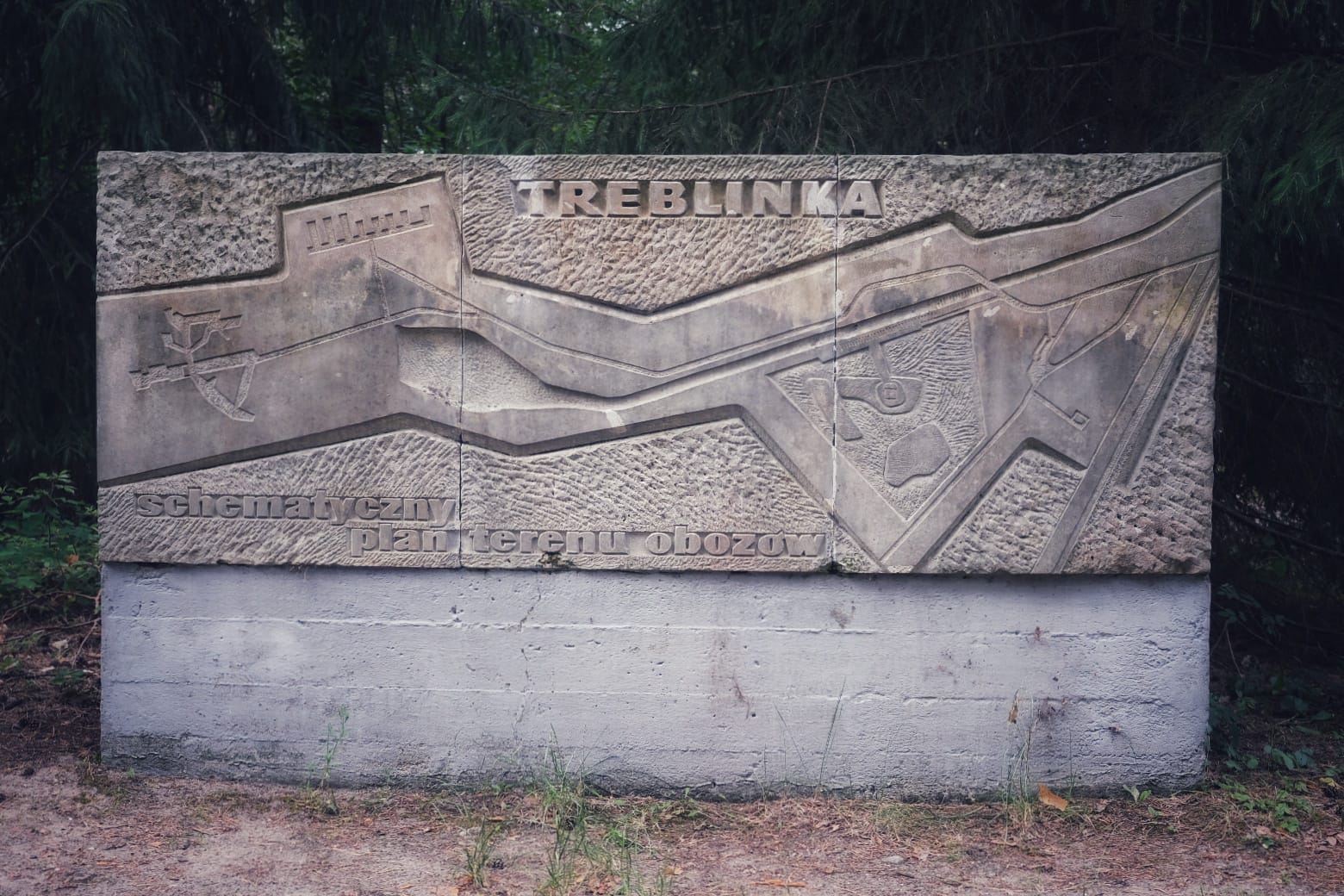This morning the weather forecast did not call for rain. Nonetheless, on the way to Treblinka it began to rain. The weather dovetailed with the content of the day at every turn - it was as though the weather was providing a soundtrack. When we were listening to intense stories, the rain and wind would pick up. When we were having a moment of wandering around and contemplating, the sun and the butterflies came out. As we left a forest, it gently began to rain and the tall trees were swaying together, in a very mournful way. I am, of course, anthropomorphizing the trees, the wind and the rain in a way that draws a stark contrast to how the Germans dehumanized the Jewish people.
Here’s how the day went and what we learned.
Yesterday we visited the Warsaw Ghetto. The Ghetto was liquidated beginning in 1941, and to do so, it was necessary to have a place nearby that could efficiently murder the Ghetto’s inhabitants. Thus, Treblinka II was built. There is a Treblinka I - it was a a forced labour camp that mostly imprisoned Polish people who would often serve a period of time and then be released. Individuals were never released from Treblinka II. In fact, the vast majority of the nearly 1 million people who arrived at Treblinka II lived for less than 45 minutes after arrival. In other words, Treblinka II was not a concentration camp, it was a death camp - with the sole purpose of murdering the people that arrived via cattle car. Roughly 4 cattle cars would be unloaded at a time (each one holding around 100 people). The men would be separated from the women and children and told to undress in the square. From there, they would be led down a tunnel like path of trees. I began this post by noting that it seemed like the trees, the wind and the rain were watching us today, somehow purposefully mirroring the moments we were moving through. The story of the tunnel made of trees makes me think of nature as an enduring witness. This is getting a bit ahead of myself, but when I last visited Auschwitz in the winter of 2018 there were two large (and old) poplar trees being cut down. The trees stood right behind the execution wall and the infamous block 11 where prisoners were often tortured. When I saw the tree being cut up and carted away I thought of what that tree must have witnessed. It was of an age that it would have been there, hanging over the execution wall and the barracks throughout the duration of the operations at Auschwitz. How many people saw the branches of this tree as their last vision on this Earth? How many would have had only a small glimpse of these leaves out the small window in the prison cells? Thus, even if the trees cannot literally witness what happens around them and cannot truly hold a memory of what they saw, in some sense they do still “hold” those memories as they stand as living reminders that living, real, individual human beings looked upon them in some of their darkest hours (or minutes).
In addition to the idea that nature can bear witness to all that humans do in its presence, I was also struck by the purposeful use of nature at Treblinka. To create a tunnel of trees in such a short amount of time would have required landscaping the area with a purpose. Someone would have had to engage in a discussion about the purpose of the trees - they wanted a constrained path that would hide from view the destination at the end. They wanted a path that would direct someone walking through it easily to only one destination. They would have had to bring in mature trees and plant them there, in a specific pattern in order to achieve the effect for which they were aiming. Who were the landscapers of the Third Reich? What responsibility do they hold for being the architects of the natural landscape that hid, directed, and surrounded mass murder?
The men were directed to run naked down this treed path and at the end, they reached a gas chamber. The early gas chambers at Treblinka were ineffective. Carbon monoxide from engines was pumped into the chambers. The ceilings were too high. Sometimes not everyone died - even after an extended period of time. In an unprecedented move across all of the death camps, operations were actually halted for a period of time in order to rebuild the gas chambers so that they would be more efficient. They lowered the ceilings to ensure that the gas would not rise to the top - out of reach of the small children.
They did not build crematoria at Treblinka II. They dug huge pits that the bodies were dumped into after being removed from the gas chambers. Death here was not quick. At a minimum, it would take 25 minutes to die - and sometimes upwards of 45 minutes. When the gas chamber doors were opened, the dead bodies would still be standing, clinging to each other due to having been packed in so tightly.
As the men were sent down the path to their deaths, the women and children were taken into a building. Here they had their hair removed. We listened to a story of one of the prisoners assigned to cut the women’s hair off. He described how the women were, in some ways, often comforted by this - as having their hair cut implied that they’d like go through a disinfection process next, and perhaps from there into a labour camp. Instead, though, the hair was being cut for much more diabolical purposes. The hair was being “harvested” in order to make mattresses for the German submarines. One young girl in her 20s was not swayed by the illusion of continued life and knew that she was headed to her death. She asked the man how long she would suffer. He lied to her and said that it would only be moments. Her name was Ruth. His name was Samuel. As we listened to their story, the wind picked up, and the rain began to fall.
When Treblinka II had killed just under 1 million men women and children, it closed. The Germans destroyed it, not only dismantling all of the evidence, but even going so far as to exhume the mass graves and burn the bodies. When they were done, they turned the area into farm land.
Today the site of Treblinka II is a somber memorial site. There are no original buildings due to the destruction of all the evidence. Despite this, we do know the story of Treblinka II. We know for two reasons: first, archeologists have been able to find evidence, including original tiles from the floors of the gas chambers that had stars of David on them. It is these small touches that really lay bare the psychological sadism employed by the Nazis. It was not uncommon that the gas chambers would be adorned with Jewish symbols like the Star of David. It is the history of these small decisions that I would like to know more about. Who ordered the tiles? Who wrote out a request to have X number of ceramic tiles delivered, each emblazoned with a Star of David? We talk a lot about how the Germans dehumanized the Jews and how this dehumanizations made it “easier” to murder them. However, if you look closely, you find small indications that they were not entirely dehumanized. What animal would we ever attempt to “calm down” prior to slaughter by displaying to them symbols of their faith? The very notion of a person having a faith is humanizing. Purposefully attempting to manipulate the psychological state of an individual requires an acknowledgement of their humanity, their consciousness and their emotional existence. In many ways, the Nazis were intentionally considering the humanity of their victims in orchestrating the ways in which they would send them to their deaths.
The second way that we know the history of Treblinka is from its survivors. On August 2, 1943, the members of the Sonderkommando (the Jewish prisoners forced to run the gas chambers, bury the bodies, raid the bodies and sheer hair) revolted, killing as many SS and Ukrainian guards in the process as they could. The majority of the men were killed by the SS (roughly 200 out of 300). Some 100 escaped, and of those, about 70 survived the war. It is from these men that we know the details of how Treblinka operated and the dark history that the Nazis attempted to hide under fields of wheat.
The main memorial at Treblinka is a large stone sculpture sitting on the location of the gas chambers. The sculpture itself attempts to depict the men women and children suffocating to death within the gas chambers. Surrounding this sculpture is a large field - but not nearly as large as you would expect. Perhaps the size of two or three football fields at most. In the centre there is a pit filled with black stones representing the open graves that the bodies were thrown into. Surrounding this, the field is filled with stones - of all sorts of shapes and sizes. Many of the stones are inscribed with the names of towns or villages from which Jews were deported to their deaths at Treblinka. There are 17,000 stones in total, and 216 of them are inscribed with the names of towns. Only one of the 17,000 stones has a person’s name inscribed on it. The name is Janusz Korczack - the keeper of the orphanage in the Warsaw Ghetto who went to his death with the children rather than leave them to die alone (I will write more about him when I write about our day in Warsaw).
On our way to the main sculpture and field of memorial stones, we stopped and listened to various stories of people who died at Treblinka. Each time, the rain would pick up and linger over us as we walked. When the last of the testimonies had been read in front of the main memorial, the rain stopped, the sun came out, and our group dispersed amongst the stones - some searching for the names of towns where they had family. The stones are placed on top of large stone slates, presumably to prevent nature from taking over and hiding the stones forever. Nonetheless, the area is weathered, and nature continues to intertwine itself with the memorial. The slabs of stone that the rocks are on are covered in moss, wild flowers grow in the field and encroach on the rocks. The field, at least today, also seemed to be filled with butterflies. They would pause for a moment on a specific stone, and then fly off to another one. Later in the evening when we discussed the day, and one of the participants noted how the signs of life and beauty juxtaposed to the memories of death and destruction was a visual expression of the following poem:
Go to Treblinka
Go to Treblinka
keep your eyes wide open
sharpen your hearing
stop your breathing
and listen to the voices which emerge
from every grain of that earth –
Go to Treblinka
They are waiting there for you
They long to the voice of your life
to the sign of your existence,
to the pace of your feet
to human look understanding and remembering
to caress of love over their ashes –
Go to Treblinka
go by your own free will
go by the power of pain over the horror which has happened
from the depth of understanding and the aching heart which has not accepted –
listen to Them there with all your senses!
Go to Treblinka
there the green silence, golden or white
which embrace Them each season of the year
will tell you stories of the stories
about life which became forbidden and impossible –
Go to Treblinka
watch how time has stopped there
listen to the standing time, to the dead thundering silence
and to the human stones weeping there in silence
Go to Treblinka to feel it even for just one second –
Go to Treblinka
grow a flower by a hot tear, by human breath
against one stone – memory of a whole community
on earth which is their flesh and ashes.
They are waiting there in Treblinka for you to come and listen to Them
cry within the silence
and in total mute identification, unifying
bring Them each time the story of life which continues and of reviving love.
Go to Treblinka for generations to generations
Do not leave Them alone -
Halina Birenbaum
-
August 2020
- Aug 5, 2020 The Social Psychology of the Holocaust Podcast Aug 5, 2020
-
May 2020
- May 21, 2020 An Open Letter About Holocaust Education in Canadian Schools May 21, 2020
-
July 2019
- Jul 8, 2019 Treblinka Jul 8, 2019
- Jul 7, 2019 Łódź Memorial: Radegast Station Jul 7, 2019
- Jul 6, 2019 Berlin & Wannsee Jul 6, 2019
- Jul 5, 2019 Berlin & the Monument for Homosexual Persecution Jul 5, 2019
- Jul 4, 2019 Berlin Jul 4, 2019
- Jul 3, 2019 Meeting with Holocaust Survivors in Toronto Jul 3, 2019
- Jul 1, 2019 Canadian Society for Yad Vashem Leaders of Change Program Jul 1, 2019
-
December 2017
- Dec 2, 2017 How Taking A Course About the Holocaust Just Might Save A Life! Dec 2, 2017


